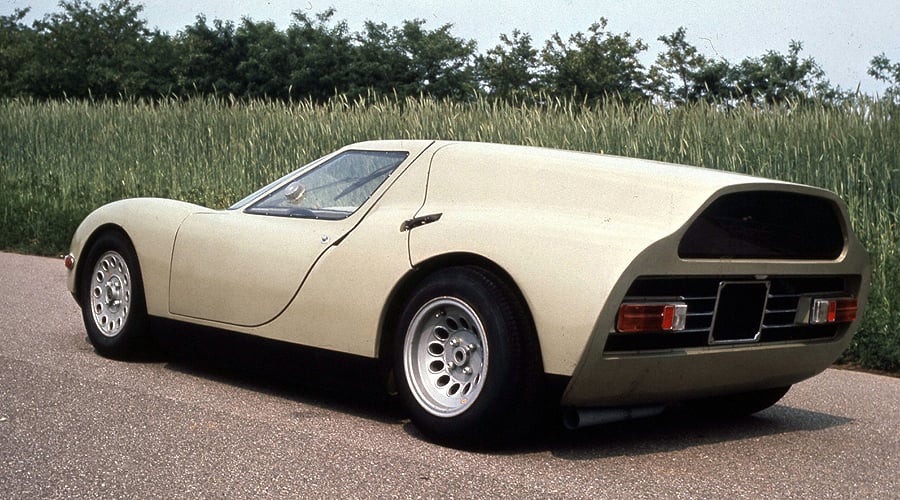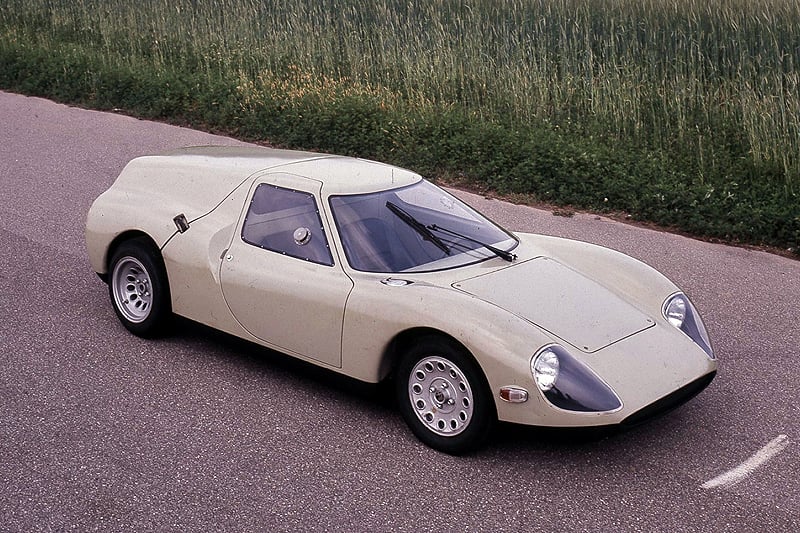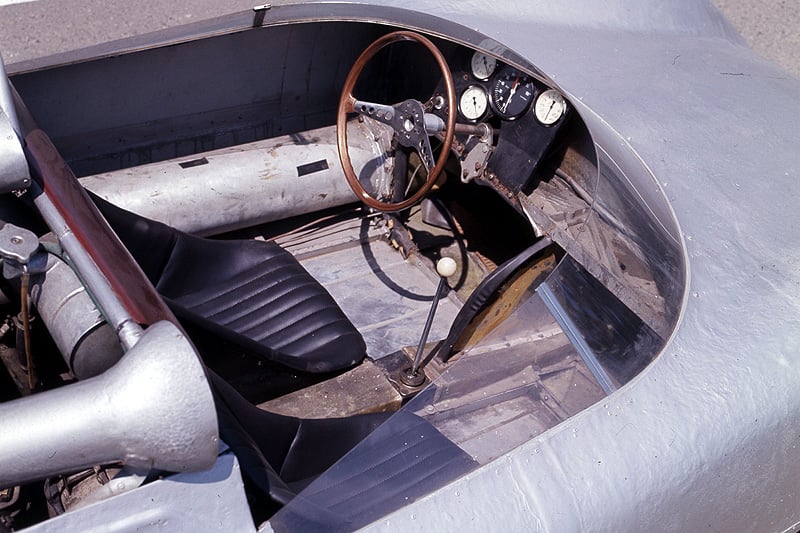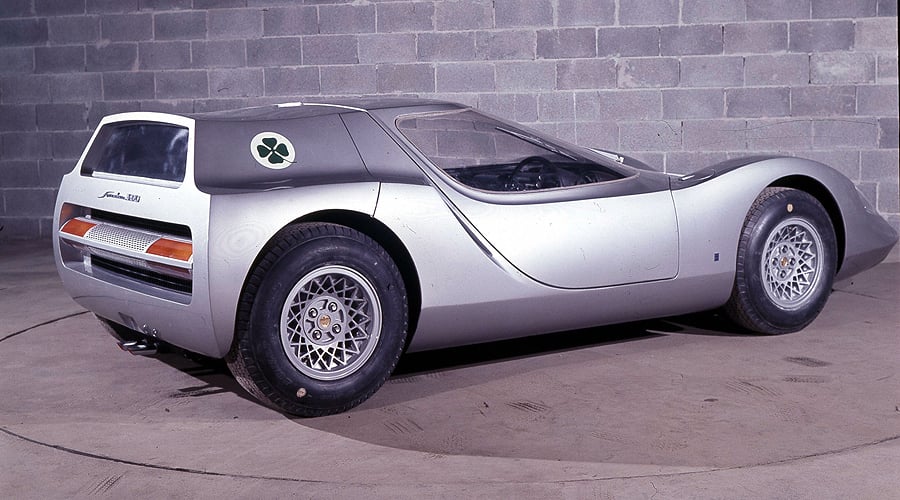Project Scarabeo came about in the mid-1960s, when Alfa Romeo was developing a racing prototype with a view to returning to major competition, following its withdrawal in 1953. Thanks to an improved financial position resulting from the sales success of the Giulietta in its various forms, the company had the means to continue from where the development of the stillborn Tipo 160 Grand Prix prototype of 1954 had left off.
The racing prototype sat on an H-shaped chassis, three of which were sent – along with a Giulia GTA engine – to OSI of Turin, which was a subsidiary of Ghia. Each chassis was given different bodywork and a slightly different seating position; one of the principles that the Scarabeo explored was to have the driver seated as far back in the car as possible. The idea had been suggested in the fifties by works driver Consalvo Sanesi, and was intended to give the driver a better position from which to assess the behaviour of – and thus to control – the car.



The Scarabeo with seats furthest back was the silver coupé that debuted at the 1966 Paris Motor Show – also note the different bodywork from the yellow car. A third, spider version was built as a test mule (thought to have used the exact chassis of the racing prototype) and its bodywork was never completed. Unlike its siblings, the silver coupé was built with right-hand drive, necessitated by the positioning of the rear-mounted engine’s carburettors. They were located just behind the headrest of the seat on the left-hand side of the car, with the occupant only protected from deafness by a thin sheet of Perspex.


A novel approach to chassis design was incorporated into the Scarabeo. The H-shaped structure was fabricated from large-diameter tubes, which also incorporated the fuel tanks to spread the liquid’s weight evenly across the car. This concept was used later in the Tipo 33, as was the Scarabeo’s employment of exotic materials such as magnesium. Other interesting features included a clutch and gearbox that were incorporated into the engine block; drive to the differential was also an integral unit, while the rear disc brakes were located centrally and each corner was sprung independently.

Although the Scarabeo concept’s mechanical elements were advanced enough to be used in the prestigious Tipo 33, it seemed there was not a good enough business case to conclude its development with a small production run, as was originally intended. Of the three Scarabeos built, two remain in Alfa’s collezione storica, while the silver coupé escaped and is thought to be in a private collection in Canada.
Photos: © Alfa Romeo Automobilismo Storico, Centro Documentazione (Arese, Milano)
Classic Concepts series
No. 1: 1969 Holden Hurricane
No. 2: 1976 Ferrari Rainbow by Bertone
No. 3: 1980 Aston Martin Bulldog
No. 4: 1959 Chevrolet Corvette Stingray
No. 5: 1976 Maserati Medici II
No. 6: 1952 Alfa Romeo C52 Disco Volante
No. 7: 1967 Lamborghini Marzal
No. 8: 1971 Matra Laser by Michelotti
No. 9: 1993 Aston Martin Lagonda Vignale
No. 10: 1968 Alfa Romeo Carabo
No. 11: 1981 Mercedes-Benz Auto 2000
No. 12: 1985 Saab 900 Turbo 16 EV-1
No. 13: 1978 Jaguar XJ Spider by Pininfarina
No. 14: 1964 Alfa Romeo Canguro by Bertone
No. 15: 1970 Stratos Zero by Bertone
No. 16: 1972 Maserati Boomerang by Italdesign









